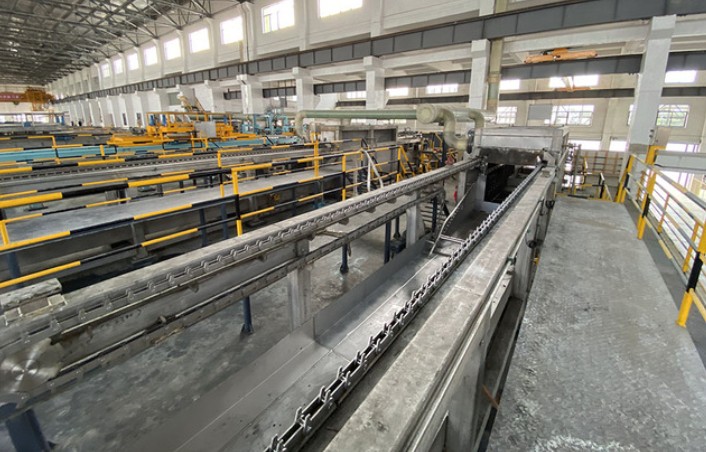NEWS&EVENTS
Home > News&Events > Company news > Recovery of precious metals from anode mud produced by electrolysis of crude antimony
At a time when global resources are becoming increasingly scarce, the recycling and high-value development of non-ferrous metals are crucial to the sustainable development of industry. After the antimony ore is smelted by pyrometallurgy to obtain crude antimony, the electrolytic refining technology can not only purify antimony metal, but also efficiently recover precious metals, building a closed-loop industrial chain of "resources-products-renewable resources".

Impurity elements in crude antimony will affect the electrolysis efficiency and product quality, so it is necessary to first make it into antimony anode plates through a smelting process. In the fluorine-chlorine system electrolyte, the antimony in the anode plate undergoes an oxidation reaction and dissolves into Sb³⁺ ions; while precious metals such as silver and gold are deposited in solid form at the bottom of the anode under the action of the electric field because their standard electrode potential is higher than that of antimony, forming anode mud rich in precious metals.
The process of extracting gold from anode mud is as follows: First, solid-liquid separation, using a suction mud tank and a vacuum filtration system to initially separate the anode mud and the electrolyte, the filtrate can be recycled, and can reduce water resource consumption. Then, slurry pretreatment is carried out, and a suspension of a specific concentration is prepared in the slurry machine to provide a uniform medium for the subsequent chlorination reaction. During chlorination leaching, chlorine is introduced into the chlorination kettle to selectively oxidize gold and silver to form soluble chlorine complexes. By precisely controlling the reaction temperature and chlorine flow rate, the gold leaching rate can reach more than 98.5%. In the deep purification stage, the four-stage countercurrent extraction technology is used to achieve efficient separation of gold ions from other metal ions, and then combined with the secondary washing process, the impurity content in the extractant is reduced to less than 0.01g/L.
The purified gold-containing organic phase is subjected to the electrolytic organic phase process, and high-purity sponge gold is precipitated at the cathode reduction. Finally, it is melted and cast at high temperature by a vacuum ingot casting machine to obtain a standard gold ingot with a gold content of 99.9%.